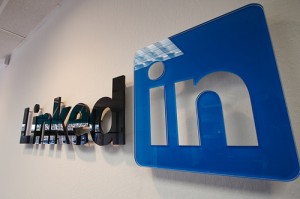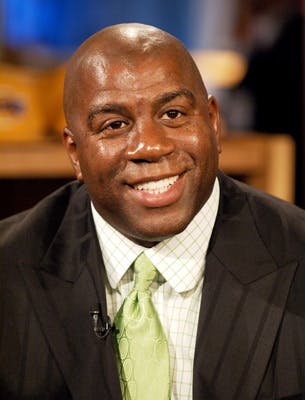LinkedIn’s Talent Connect conference wound down in Las Vegas Wednesday after a three-day run that was equal parts training, trends, product, and showbiz. It was the perfect mix for a city that thrives on spectacle.
After a Tuesday night party worthy of a last century Silicon Valley event, a bleary-eyed audience was brought to its feet by former basketball great and now-successful businessman Magic Johnson.
Roaming the cavernous convention hall, he mixed photo ops with motivational lessons from his life, which took him from high school standout to Laker star and now to business success as the CEO of multi-million dollar development companies that work largely in inner city neighborhoods.
 He offered up such chestnuts as ”It’s not enough to deliver … you have to overdeliver”; “losers lose and winners win”; and others as he told his life story. It was an entertaining almost 90 minutes that went into overtime as Johnson took questions, hustling over to each person to make sure they could get a picture of themselves with the NBA legend.
He offered up such chestnuts as ”It’s not enough to deliver … you have to overdeliver”; “losers lose and winners win”; and others as he told his life story. It was an entertaining almost 90 minutes that went into overtime as Johnson took questions, hustling over to each person to make sure they could get a picture of themselves with the NBA legend.
Data mining for competitive purposes
A more serious and sober panel followed, talking about, of all things, data. Johnson’s razzle-dazzle was a tough act to follow, but what the session offered was a glimpse into the future for HR and, very plainly, for LinkedIn.
The crux of what the panelists had to say is that we are swimming in data, more data than has ever before existed in the history of the world, and companies are just now beginning to learn how to effectively mine it for competitive purposes.
Four very smart people shared the stage — Reid Hoffman, co-founder and chairman of LinkedIn; Tim O’Reilly founder and CEO of O’Reilly Media, Michael Chui of McKinsey, and Josh Bersin CEO of the HR consulting firm Bersin & Associates. Analyzing all the recruiting and employee data that companies gather has been a powerful trend in HR for years, but from what the panelists said, the information already in company servers and HR hard drives has barely been tapped.
Companies that learn how to use it will be able to make decisions about all sorts of business issues, not the least of which is workforce planning and recruiting. Bersin, the moderator, naturally enough opened the session with a reference to Moneyball, the movie about how the Oakland A’s mined statistical data to put together a winning team on a shoestring (as Major League Baseball goes) budget.
The session, quipped Bersin, should be called “Moneyball comes to HR.”
The sit-up-and-take-notice moment came when LinkedIn demonstrated how the company is mining the 120 million+ profiles and other data it has and making it available for recruiters.
“Big data is a big deal”
Go into LinkedIn Skills and do a search yourself and you’ll discover the rich information that results. The demo search for “android” turned up ranked lists of LinkedIn members who are professionals in the field, as well as lists of additional skills that android experts list in their profiles. Not sure what companies hire mobile experts? The Skills results page tells you. Same for where they are located and more.
A recruiter could use this data in multiple ways, including compiling skills checklists, discovering the companies that have mobile professionals on staff, the groups they join, and, of course the names of professionals whose connections they may be able to leverage.
Skills is in beta, so expect some hiccups. My own search for “editors” included a Wikipedia reference to a British rock band by that name. Still, Skills is a useful resource as it is now, and it hints at the even deeper data LinkedIn has.
As the panelists noted, every company has some of that same kind of information about its workforce. Mined and, as Chui said, integrated with data from outside the company, data such as that available free from the U.S. Bureau of Labor Statistics, then, as he maintained, “It really matters on a bottom-line basis.” Big data,” he said, “is a big deal.”
